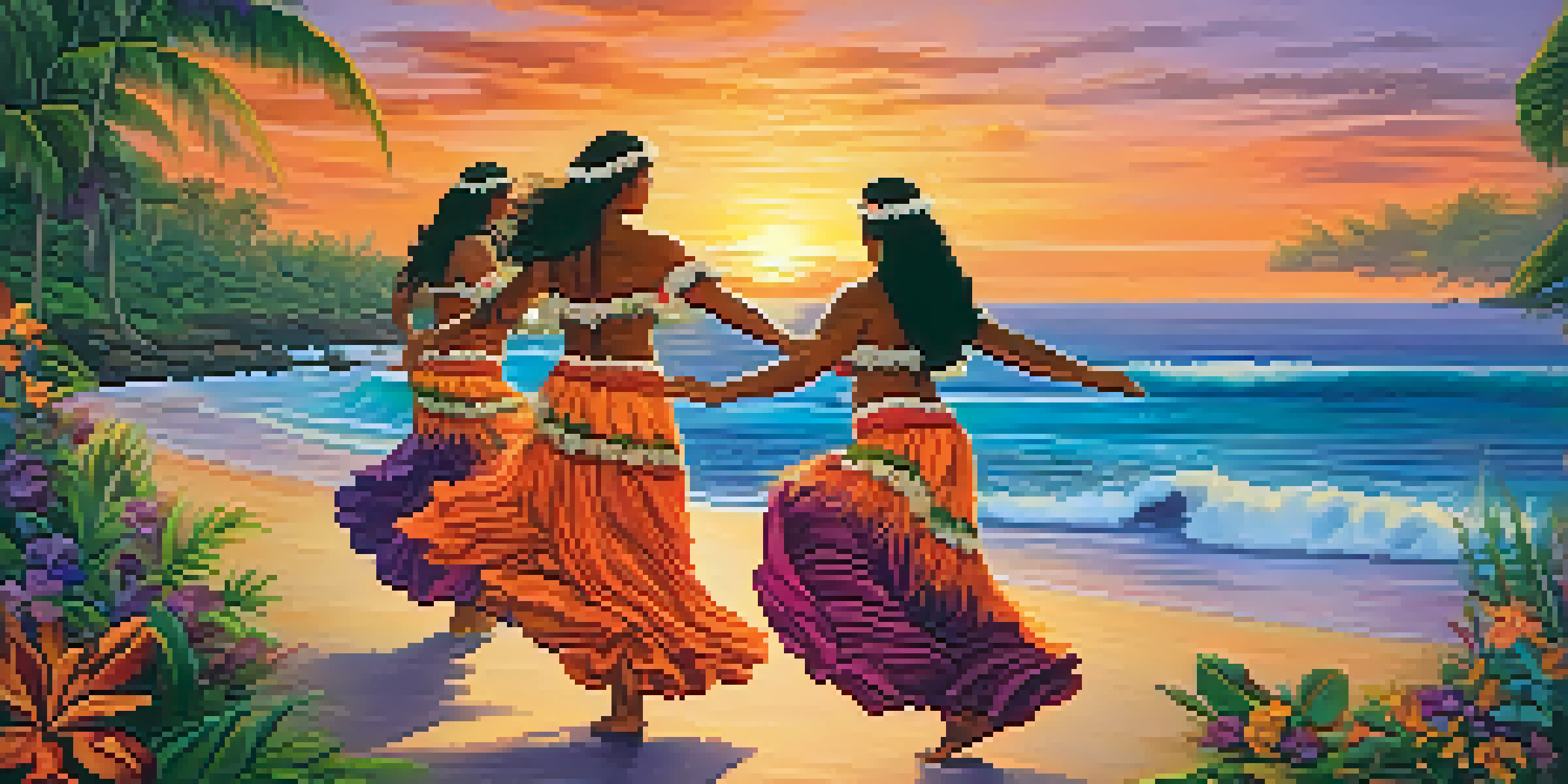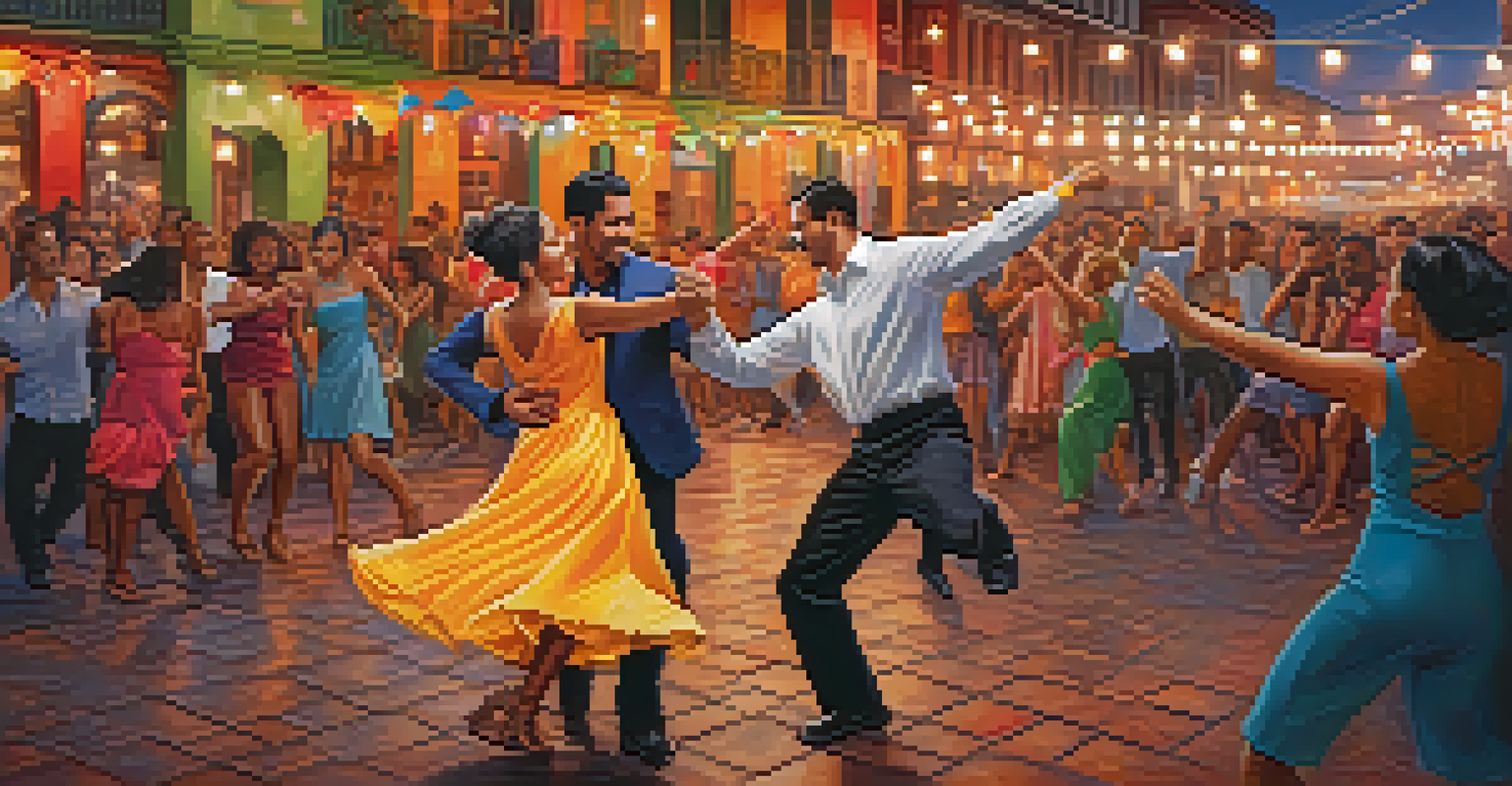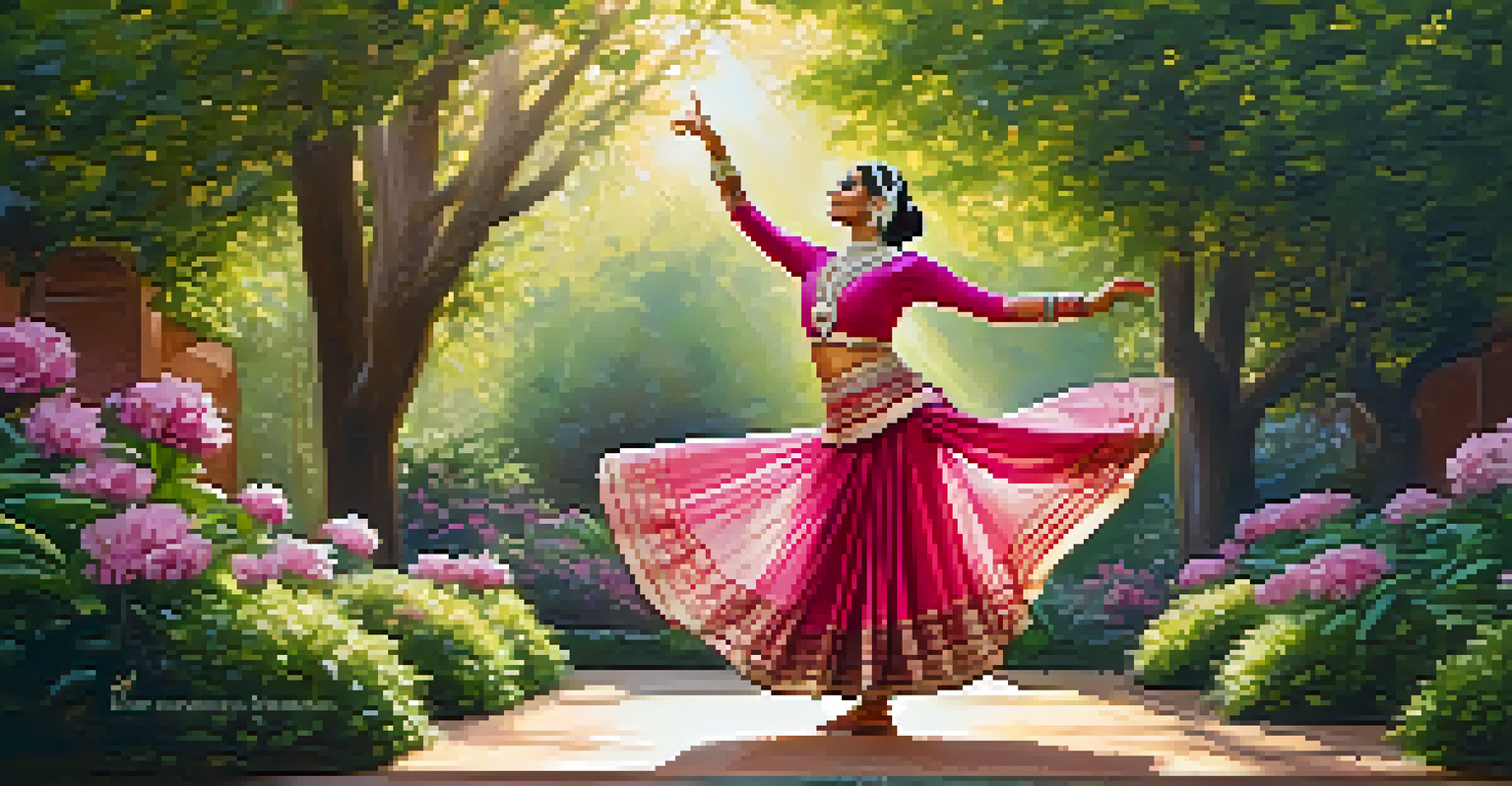Dance Representation in Animated Films: A Cultural Examination

The Importance of Dance in Cultural Storytelling
Dance has always been a powerful form of expression, serving as a vital storytelling tool in many cultures. In animated films, it transcends mere entertainment, encapsulating the essence of cultural narratives and traditions. For example, in Disney's 'Moana,' the traditional hula dance not only showcases the beauty of Polynesian culture but also conveys deep emotional connections to ancestors and the ocean.
Dance is the hidden language of the soul.
By incorporating dance, animators can reflect the history, struggles, and triumphs of a culture, making the stories more relatable and impactful. This visual medium allows audiences to experience cultural nuances in a way that words alone often cannot. Therefore, understanding dance's role in these films helps viewers appreciate the rich tapestry of global cultures.
Moreover, animated films often serve as an introduction to diverse cultures for younger audiences, making it essential that the representation of dance is both authentic and respectful. By spotlighting various dance forms, these films can educate and inspire, fostering a sense of curiosity and appreciation for cultural diversity.
Animated Dance Styles: A Diverse Palette
Across animated films, we see a vibrant array of dance styles that reflect the diversity of global cultures. From the energetic salsa in 'Coco' to the elegant ballet in 'The Nutcracker,' each style tells its own story and brings its own flavor to the narrative. This variety not only entertains but also educates audiences about different cultural practices.

For instance, the intricate movements of Indian classical dance in films like 'The Jungle Book' highlight the rich heritage of Indian storytelling. Similarly, the incorporation of hip-hop dance in contemporary animations resonates with modern youth culture, bridging generational gaps. Such representations empower viewers to recognize the beauty in different forms of expression.
Dance as Cultural Storytelling
Dance serves as a vital storytelling tool in animated films, reflecting the essence of various cultures and their narratives.
These animated depictions often serve as a gateway for audiences to explore these dance styles further. By showcasing these diverse movements, animated films can spark interest and encourage viewers to learn more about the cultures they represent, enhancing cultural appreciation and understanding.
Challenges in Cultural Representation Through Dance
While animated films can celebrate cultural dance, they also face significant challenges in representation. One major issue is the risk of cultural appropriation, where elements of one culture are adopted without understanding or respecting their significance. This can lead to portrayals that misrepresent or oversimplify complex cultural practices, which can be harmful.
Dance is the joy of movement and the heart of life.
For example, when a film uses traditional dances as mere background spectacle, it diminishes their cultural importance. Such oversights can result in audiences developing misconceptions about a culture, rather than fostering genuine understanding. It's crucial for filmmakers to engage with cultural consultants and community members to ensure authenticity.
Moreover, the commercialization of cultural dance can sometimes overshadow its true meaning and context. Animated films must strike a balance between artistic expression and respectful representation to avoid perpetuating stereotypes or creating misleading narratives.
The Role of Music in Dance Representation
Music is inextricably linked to dance, and its role in animated films is crucial for enhancing cultural representation. The rhythms, melodies, and lyrics often dictate the energy and emotion of a dance sequence, making the experience more immersive for viewers. For instance, the vibrant mariachi music in 'Coco' complements the lively dance scenes, creating a dynamic celebration of Mexican culture.
Moreover, the choice of music can reflect the cultural significance of the dance itself. Traditional instruments, melodies, and vocal styles help ground the animation in its cultural context, providing an authentic backdrop for the dance. This relationship between music and dance enriches the storytelling, inviting audiences to feel the cultural heartbeat.
Challenges of Cultural Representation
Filmmakers must navigate the risks of cultural appropriation and misrepresentation when incorporating dance into animated films.
When done well, the synergy between music and dance not only entertains but also educates audiences about the culture being depicted. Through memorable soundtracks and choreographed movement, animated films can create lasting impressions, encouraging viewers to explore the cultural roots behind the artistry.
Iconic Dance Scenes That Shaped Animation
Over the years, several animated films have featured iconic dance scenes that resonate deeply with audiences. These moments often become defining characteristics of the film, leaving a lasting impact on popular culture. For instance, the 'Be Our Guest' scene in Disney's 'Beauty and the Beast' showcases a delightful blend of animation, music, and dance, capturing the whimsical essence of the film.
Such iconic scenes not only entertain but also create a sense of nostalgia for viewers, making them memorable touchstones in animation history. These moments often inspire future filmmakers and animators to experiment with dance, leading to new innovations in the genre. As a result, the legacy of these dance sequences continues to influence storytelling techniques in animated films.
Moreover, when audiences think of these iconic scenes, they often recall the cultural expressions they represent. This intertwining of dance and culture in memorable sequences fosters greater appreciation and understanding of different traditions, enriching the experience for viewers of all ages.
The Future of Dance in Animated Films
As animation continues to evolve, so too does the representation of dance within the medium. Advances in technology, such as motion capture and computer-generated imagery, allow for more dynamic and realistic portrayals of dance. This opens up exciting possibilities for filmmakers to explore various dance forms and styles in greater depth.
Moreover, there is a growing awareness and emphasis on cultural sensitivity and authenticity in animation. As audiences become more discerning, filmmakers are increasingly held accountable for how they represent different cultures, leading to more thoughtful portrayals of dance. This shift encourages the inclusion of diverse voices in the creative process, resulting in richer narratives.
Future of Dance in Animation
Advances in technology and a focus on cultural sensitivity are shaping a more inclusive future for dance representation in animated films.
Looking ahead, the future of dance in animated films promises to be vibrant and inclusive. By embracing cultural diversity and collaboration, animators can create stories that not only entertain but also educate and inspire audiences worldwide, celebrating the universal language of dance in all its forms.
Celebrating Dance as a Universal Language
Ultimately, dance serves as a universal language that transcends cultural barriers, making it a powerful tool in animated storytelling. Regardless of background, people can connect with the emotions and expressions conveyed through dance. This shared experience fosters empathy and understanding, reminding us of our commonalities.
Animated films that celebrate dance can inspire audiences to appreciate the beauty of diversity while also recognizing the threads that unite us. By highlighting various dance forms, these films encourage viewers to explore and embrace different cultures, fostering a sense of global community. It’s a beautiful reminder that while we may come from different places, we all share the joy of movement and expression.

As we continue to see dance woven into the fabric of animated storytelling, it’s essential to honor its cultural roots and significance. By doing so, we not only enrich our own experiences but also contribute to a greater understanding and appreciation of the world around us.